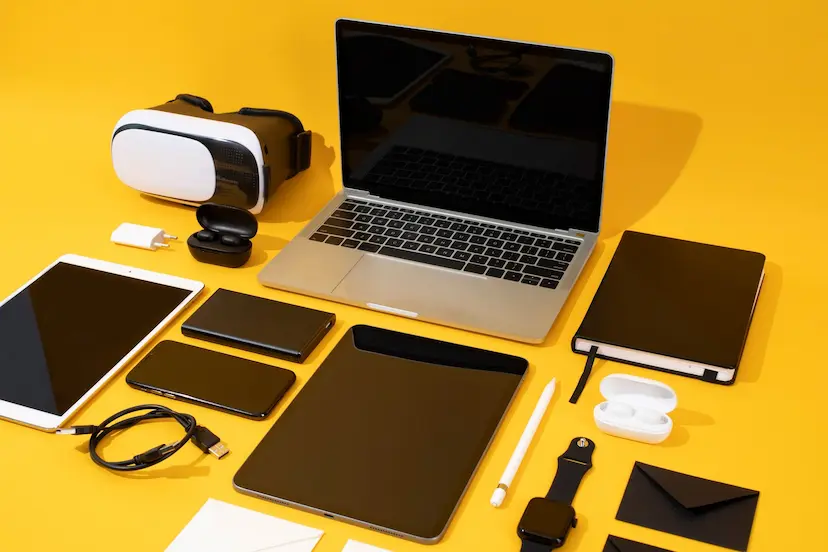In the quiet corners of our homes, nestled between the mundane routines of waking, working, and winding down, a profound transformation unfolds. It’s not heralded by flashy announcements or grand unveilings, but rather manifests in the subtle ways our relationship with time, attention, and comfort has been rewired by the unassuming gadgets we’ve welcomed into our lives. These devices, far from being mere tools, have become silent architects of our daily existence, quietly recalibrating how we experience the world.
The Morning Symphony: Orchestrating Dawn
Consider the modern morning ritual. Gone are the days of a simple alarm clock’s jarring buzz. Today’s wake-up experience is a carefully curated symphony conducted by interconnected devices. Smart lighting systems simulate sunrise, gradually brightening the bedroom to align with our circadian rhythms. Sleep trackers analyze our rest cycles, choosing the optimal moment within a preset window to gently rouse us with vibrations or soft tones. Meanwhile, smart coffee makers, having received signals from our wearables that we’ve entered light sleep, begin brewing our preferred blend, ensuring the aroma greets us as we stumble into the kitchen.
This orchestration extends beyond convenience. These gadgets have fundamentally altered our relationship with the transition from sleep to wakefulness. The jarring shocks of yesterday have been replaced by gentle gradients, respecting our biological imperatives. The data collected over weeks and months reveals patterns we might never have noticed – how our sleep quality correlates with evening screen time, how room temperature affects our ability to fall asleep, how hydration levels impact morning alertness. This isn’t just technology making things easier; it’s technology making us more attuned to our own bodies.
The Attention Economy: Battling for Focus in a Distracted World
Perhaps nowhere is the impact of gadgets more profound than in the realm of attention. The smartphone, once hailed as the ultimate productivity tool, has become the primary battleground for our focus. The average person now checks their phone over 150 times daily, each glance fragmenting concentration and resetting cognitive engagement. The gadgets we carry have created an attention economy where our ability to sustain deep thought has become a scarce resource.
In response, a counter-movement has emerged, embodied in a new category of gadgets designed specifically to protect and cultivate focus. Distraction-free writing devices with e-ink displays replace the endless temptations of a connected computer. Physical timers that lock away smartphones for predetermined periods create enforced digital detoxes. Even smartwatches now feature focus modes that limit notifications to only the most critical alerts, acknowledging that constant connectivity comes at the cost of productivity.
The irony is palpable: we now need gadgets to protect us from the distractions created by other gadgets. This reflects a deeper societal shift in our relationship with technology. We’re moving from uncritical adoption to intentional curation, recognizing that the tools we use must serve our goals rather than dictate our behaviors. The most valuable gadgets of the coming decade may well be those that help us reclaim our attention spans.
The Kitchen Alchemy: Transforming Raw Ingredients
The culinary realm has witnessed its own quiet revolution, driven by gadgets that democratize techniques once reserved for professional kitchens. Sous vide immersion circulators, once costing thousands and found only in high-end restaurants, now sit on countertops alongside toasters and blenders. Precision cookers maintain exact temperatures for hours, transforming tough cuts of meat into tender delicacies and allowing home cooks to achieve consistency previously impossible.
Smart ovens with integrated probes and app connectivity eliminate guesswork, notifying us precisely when a roast reaches the desired internal temperature. Connected scales work with recipe apps to adjust ingredient measurements in real-time based on the number of servings needed. Even the humble coffee grinder has been reimagined, with burr designs and precision settings that extract nuanced flavors from beans once masked by inconsistent grinding.
These gadgets haven’t just made cooking easier; they’ve changed our relationship with food preparation. The anxiety of overcooking expensive ingredients has been replaced by confidence. The mystery of complex techniques has been solved by precise temperature control. Home cooks now experiment with fermentation, dehydration, and molecular gastronomy, guided by gadgets that make these processes accessible. The result is a generation of amateur chefs producing restaurant-quality meals, not despite their gadgets, but because of them.
The Sanctuary Builders: Crafting Personal Environments
Our homes have become increasingly responsive environments, shaped by gadgets that monitor and adjust to our preferences in real-time. Smart thermostats learn our schedules and adjust temperatures accordingly, not just for comfort but for energy efficiency. Air quality monitors detect pollutants and trigger air purification systems when needed. Humidity sensors work with dehumidifiers to maintain optimal levels for health and comfort.
Lighting has perhaps seen the most dramatic transformation. Smart bulbs can shift color temperature throughout the day, providing energizing blue-white light in the morning and warmer, relaxing tones in the evening. This aligns with our natural circadian rhythms, potentially improving sleep quality and daytime alertness. Voice-controlled systems allow us to create scenes – “Movie Night,” “Dinner Party,” “Reading Time” – that instantly adjust multiple lighting fixtures to create the perfect ambiance.
These environmental gadgets represent more than luxury; they reflect a growing understanding of how our surroundings influence our wellbeing. The ability to craft personalized environments responds to the fundamental human need for sanctuary – spaces that reflect and support our physical and emotional states. As these systems become more sophisticated, they may eventually anticipate our needs before we consciously recognize them, creating homes that truly nurture rather than merely shelter.
The Digital Companions: Redefining Connection
Perhaps the most profound impact of modern gadgets lies in how they’ve reshaped human connection. Smart speakers have become digital companions, answering questions, playing music, and controlling other devices through conversational interfaces. Video calling devices have made face-to-face conversations possible across continents, reducing the isolation of distance. Even pet cameras with treat dispensers allow us to interact with our animals remotely, acknowledging the deep emotional bonds we form with non-human companions.
These gadgets have created new forms of presence. Grandparents read bedtime stories to grandchildren thousands of miles away. Friends share cooking sessions via synchronized video feeds. Couples maintain intimacy through connected devices that transmit touches across distances. The boundaries between physical and digital presence have blurred, creating new possibilities for connection that were unimaginable just decades ago.
Yet this transformation comes with complexities. The same devices that connect us can also isolate us, replacing face-to-face interaction with digital mediation. The convenience of virtual connection may sometimes come at the cost of genuine human contact. As we embrace these gadgets, we must navigate this delicate balance, using them to enhance rather than replace the rich tapestry of human relationships.
The Unseen Impact: Data Trails and Digital Shadows
Beneath the surface of these convenient, often delightful gadgets lies a less visible infrastructure of data collection and algorithmic processing. Every interaction leaves a digital footprint – when we wake, what we eat, how we exercise, where we go, who we talk to. This data, aggregated and analyzed, creates detailed profiles that can predict our behaviors with startling accuracy.
The implications extend beyond targeted advertising. Insurance companies may adjust rates based on fitness tracker data. Employers might monitor productivity through connected devices. Governments could track movements via the gadgets we carry. The convenience these gadgets provide comes at the cost of privacy, creating digital shadows that follow us through life.
This tension represents one of the defining challenges of our technological age. How do we harness the benefits of these remarkable gadgets while maintaining control over our personal information? The answer lies not in rejecting technology but in demanding transparency, accountability, and meaningful consent. The gadgets of the future must be designed with privacy as a fundamental feature rather than an afterthought.
The Road Ahead: Conscious Coexistence
As we look to the future, the trajectory of gadget evolution suggests even deeper integration into our lives. Wearable health monitors will become more sophisticated, potentially detecting illness before symptoms appear. Smart home systems will become more anticipatory, adjusting environments based on subtle cues. Augmented reality glasses may overlay digital information onto our physical world, creating hybrid experiences that blend the real and virtual.
The challenge ahead is not technological but philosophical. How do we ensure these gadgets serve human flourishing rather than diminish it? How do we maintain agency in a world of increasingly autonomous systems? The answer lies in conscious coexistence – approaching technology not with uncritical enthusiasm or reflexive fear, but with thoughtful engagement.
The gadgets that will truly matter in the coming years are those that enhance our humanity rather than diminish it. Those that help us connect more deeply, create more meaningfully, and live more healthily. Those that respect our attention rather than exploit it. Those that give us control over our data rather than taking it from us.
In the end, the silent revolution unfolding in our homes and pockets is about more than gadgets. It’s about the kind of lives we want to live and the kind of society we want to create. As these devices continue to evolve, may we evolve with them – not as passive consumers but as conscious participants in shaping a technological future that reflects our highest aspirations.


